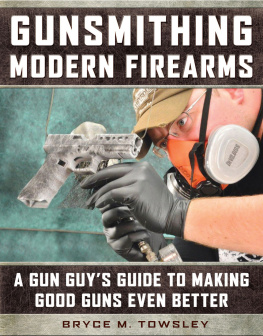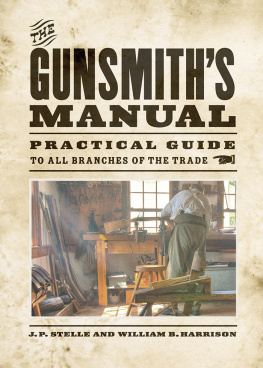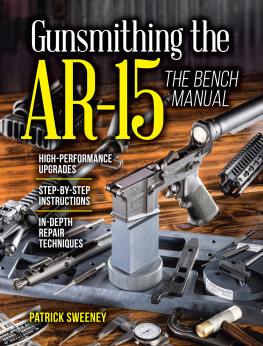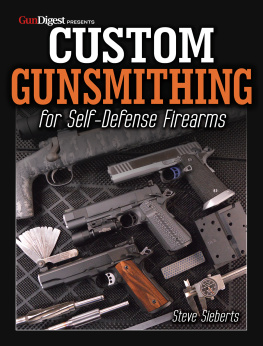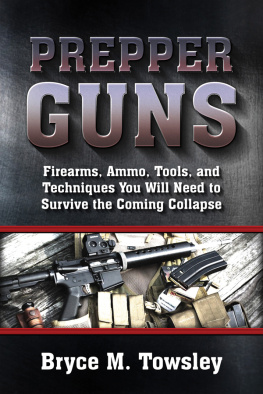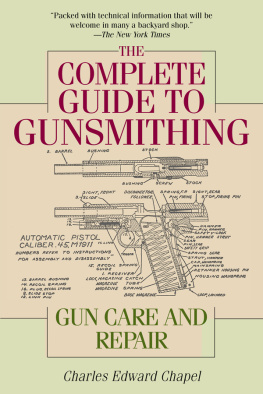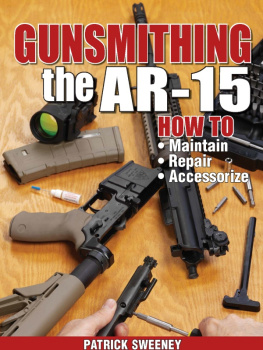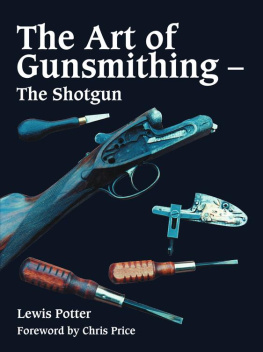


Copyright 2018 by Bryce M. Towsley
All rights reserved. No part of this book may be reproduced in any manner without the express written consent of the publisher, except in the case of brief excerpts in critical reviews or articles. All inquiries should be addressed to Skyhorse Publishing, 307 West 36th Street, 11th Floor, New York, NY 10018.
Skyhorse Publishing books may be purchased in bulk at special discounts for sales promotion, corporate gifts, fund-raising, or educational purposes. Special editions can also be created to specifications. For details, contact the Special Sales Department, Skyhorse Publishing, 307 West 36th Street, 11th Floor, New York, NY 10018 or .
Skyhorse and Skyhorse Publishing are registered trademarks of Skyhorse Publishing, Inc., a Delaware corporation.
Visit our website at www.skyhorsepublishing.com.
10 9 8 7 6 5 4 3 2 1
Library of Congress Cataloging-in-Publication Data is available on file.
Cover design by Tom Lau
Cover photo credit: Bryce Towsley
Print ISBN: 978-1-5107-1880-7
Ebook ISBN: 978-1-5107-1881-4
Printed in China
This book is dedicated to the memory of Bob Brownell.
If he had not started his company and sent out that first catalog in 1947, hobby gunsmithing would be much different today.
CONTENTS
SECTION ONE:
PRIMARY PROJECTS
SECTION TWO:
ADVANCED PROJECTS
FOREWORD
G unsmithing is in our blood. My family has been in gunsmithing for the better part of three generations. We all started at home, on our kitchen table or work shop. Our passion drove us to learn more, to ask questions and to improve our skills.
The moment you started tinkering with your firearm you became a gunsmith. This is how Brownells started. My grandpas passion for fixing his own guns and those of his neighbors turned into a business that would become Brownells.
From the do-it-yourself hobbyist to the most-skilled firearms artisans, it all starts with a spark to learn more about firearms. The hunter who wants to make his rifle as accurate he can. The competitor looking for the extra little edge. The shooter who wants to make his gun truly unique and special and wants to put his own stamp on it. We are all gunsmiths.
Those are the people who will get the most out of this book. The honest-to-goodness gun people who are passionate about not only guns and the Second Amendment lifestyle, but also about being as self-reliant as possibleto the point they can do most of their own gunsmithing.
And theyve got an excellent guide in author Bryce Towsley.
Weve known Bryce for years. Hes been a professional gun writer and photographer since 1982, and was a field editor for NRAs American Rifleman, American Hunter and Shooting Illustrated. Hes written articles and shot photos for just about all the major gun and hunting publications, and has appeared numerous times on TV.
More than that, Bryce is a true member of gun culture. Hes a shooter, a hunter, a competitor, and a gunsmith. Bryce lives, breathes, and knows guns.
He shares some of his extensive knowledge and experience in this book. He shows the aspiring hobbyist gunsmith how to accomplish all sorts of important tasks. From changing a magazine spring on your favorite shotgun, to protecting and enhancing your guns appearance with coatings like DuraCoat and Cerakote.
Theres a section on how to modify one of the most-popular handguns on the planetthe Glock. And another on how to replace the trigger on a Remington 700.
For the more advanced hobbyist, Bryce lays out how to build the classic 1911 from parts, showing how to hand-fit the various pieces for maximum reliability. He demonstrates the tools and techniques to build a precision rifle from scratch; how to blueprint the action, fit and chamber the barrel, cut a crown, and even install a Sako or M-16 extractor on a bolt.
And he does it all with his trademark personal, fun-to-read style. Bryce not only tells you what to do, he also shows you what not to do, using the mistakes hes made as teaching moments. This is not a technical manual. Its a collection of personal stories told by a master story-teller, centered around guns and gunsmithing.
Guns are a very special part of our unique American heritage. Guns are useful tools. They can help feed us and protect us. They are used in competition. They are inherently interesting examples of engineering and human ingenuity. They are family heirlooms. They are physical embodiments of our constitutionally guaranteed freedoms and liberties. They help us maintain and protect those freedoms and liberties. And added to all of those amazing qualities, guns are also simply fun to both shoot and work on. Youll like this book. Its about guns, and how you can learn how to repair, maintain, customize, and even build them yourself.
Pete Brownell
February 1, 2018
INTRODUCTION
W hile I was working on this book the news reported that Robert M. Pirsig had passed away. The current generation is probably responding, Who? But when I was a young man, he was a household name. He is best known for the book Zen and the Art of Motorcycle Maintenance. This was a huge, international best seller and for a while it was the primary topic with young people arguing late into the night.
Although I am an avid reader, I had somehow never read this book. Probably because it was so popular and I rebelled, but upon seeing the news I wondered what it was that I had missed in my stubbornness, so I ordered the paperback.
This book first came out in 1974 and I wish I had read it then as a wide-eyed kid a year out of high school, because I think it would have had more impact. While I dont mean to alienate its millions of fans, this book just didnt grab me. Reading it now, much later in life, I found it just drudgery to get through his philosophical ramblings. I never skip anything in any book, but I found myself jumping over pages in an attempt to get to the end. (Please dont do that with this book.)
Pirsigs descriptions of the motorcycle trip and the interactions with his friends and his son are quite interesting, but he continually runs off on philosophical rants that just make my eyes glaze over. However, he does have one passage that I think works well for any aspiring gunsmith. Its part of a multi-page discussion about the written instructions for an outdoor barbecue rotisserie. (This really is not an edge-of-your-seat kind of book.)
His friend has spent an ineffective afternoon trying to assemble the rotisserie and is looking for somebody or something to blame for his failure. Pirsig makes his living writing technical instruction manuals (which probably explains his less than exciting writing style) and his friend asks him to tell him that the instructions are the problem, not his inability to understand them. That launches a long and rather boring discussion about the classic-romantic split and how different minds interpret technology. I suppose a stoned-out eighteen-year-old would be mesmerized, but a 60-something jaded gun writer just wanted it to end.
Until I found this passage about the difference in how a novice or a bad worker will differ from the craftsman:
The craftsman isnt ever following a single line of instruction. Hes making decisions as he goes along. For that reason hell be absorbed and attentive to what hes doing even though he doesnt deliberately contrive this. His motions and the machine are in a kind of harmony. He isnt following any set of written instructions because the nature of the material at hand determines his thoughts and motions, which simultaneously change the nature of the material at hand. The material and his thoughts are changing together in a progression of changes until his minds at rest at the same time the materials right.
Next page
